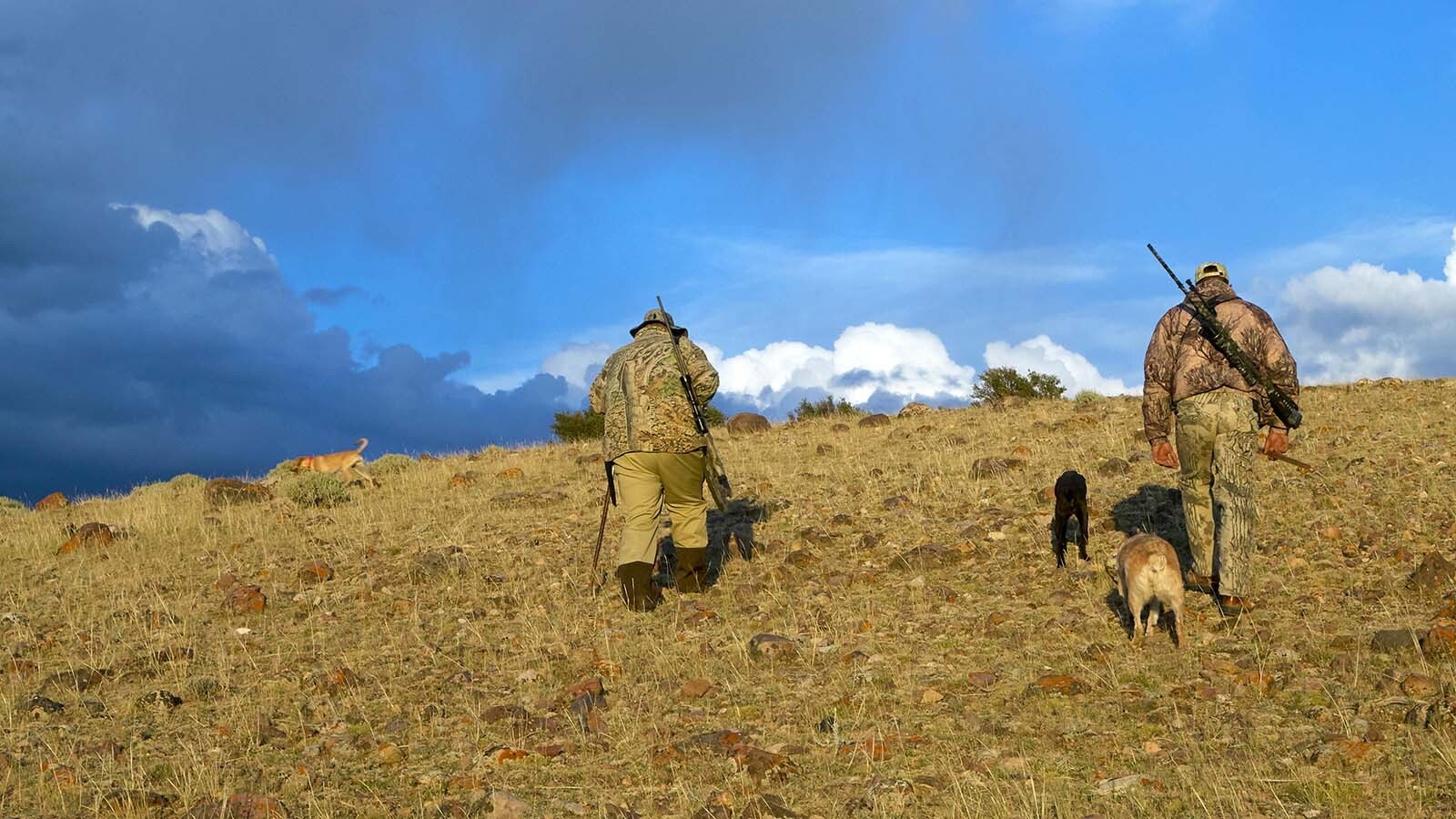By Mark Davis, Powell Tribune
A new Wyoming hunting group wants to prove the value of switching ammo and tackle to local sportsmen and women. They know success won’t come easy, but the journey will be worth it if they can keep poison off your plate.
Sporting Lead-Free hopes to reduce lead consumed inadvertently by people and wildlife and is proposing ways to help anglers and hunters see the positives of choosing tackle and ammo that doesn’t poison the environment.
Programs include X-raying your packaged meat to help get the lead out of your wildgame meals and demonstrating the advantages of new, non-lead ammunition.
“A lot of us hunt because we want to know where our food is coming from and being able to know that you’re providing clean meat to you, your kids, your grandkids and other family and friends,” said Brian Bedrosian, director and co-founder of the group.
So far, he said the group has X-rayed about 1,200 packages of wild game meat — finding lead fragments in about 15% of the ground meat packages.
It’s almost impossible to keep lead fragments out of meat from harvested animals, Bedrosian said. The metal rarely causes severe issues in humans as long as exposure is low. However, it’s particularly deadly to; scavenging birds who consume gut piles; animals that have been shot but not found by hunters; and waterfowl that eat lead pellets in fields and wetland areas.
Every year, as hunting season comes to an end, wildlife biologists, veterinarians and rescue workers in the state start seeing raptors, including golden and bald eagles, being brought to raptor care facilities with lead poisoning. Bedrosian has spent the past 15 years documenting the link between lead-based ammunition and ingestion in wildlife in his role as conservation director of the Teton Raptor Center. He’s also the former president of the Wyoming Chapter of The Wildlife Society and is co-chair of the Wyoming Golden Eagle Working Group.
“We have arguably the best population of breeding golden eagles in the western United States,” he said in a Tuesday interview. “What we do here has a profound effect on the continental population of golden eagles.”
As an avid big game hunter, Bedrosian knows how hard it is to persuade outdoors enthusiasts to change. But those on the front lines have grown frustrated watching waterfowl, raptors and some of the most endangered species suffer and die due to lead being introduced into the environment.
In 2018, a condor moved into an area near Laramie, exciting wildlife enthusiasts. It was the first verified condor sighting in Wyoming in decades. But the news soon turned sour when condor T2 died of lead poisoning near its perch on Medicine Bow Peak in the Snowy Range.
“I think it’s a fair statement to make that California condors cannot survive in the wild without getting rid of lead in ammunition and other sources,” Bedrosian said.
In Park County, Susan “the bird lady” Ahalt, founder of Ironside Bird Rescue in Cody, has struggled to keep up with the number of eagles and other birds suffering with lead poisoning. She often runs out of freezer space after hunting season due to the number of carcasses she has to store. When an eagle dies, it has to be shipped frozen to the national repository for eagles in Denver.
“I’d like to defrost [the freezer], but it’s never empty,” Ahalt said in 2020.
Ahalt is also a hunter and said she never gave her ammo a second thought until seeing how lead poisoning affected wildlife.
Bedrosian watched lead levels in raptors drop after the Teton Raptor Center distributed free non-lead ammunition. He said getting hunters to switch to nontoxic ammo comes down to education and availability of alternatives.
Sporting Lead-Free’s outreach coordinator, Hannah Leonard, will be handing out non-lead split shot to anglers during the state’s free fishing day. She is also willing to travel Wyoming, X-raying meat and presenting ammo seminars.
The group feels it’s a better approach to educate outdoor enthusiasts rather than seeking legislation outlawing the use of lead ammo.
“We are 100% behind a voluntary educational approach,” Bedrosian said. “We have no interest in going down any kind of regulatory or legislative route.”
Leonard hopes to do at least two shooting demonstrations a month, having groups shoot both lead and non-lead ammo and looking at the results of bullet fragmentation and ballistic performance. They will also be launching a mobile X-ray facility to better serve the entire state.
“If you’re worried that the meat you packaged might contain lead fragments, we will identify those packages that have that lead,” she said, adding, “If you have children or somebody pregnant in your life, you can make sure they don’t consume that [meat].”
Most ammunition manufacturers have a non-lead line now. Non-toxic ammunition “is available in every caliber and the performance is amazing,” Bedrosian said.
The price is a little higher, but the difference is between 25 and 50 cents a bullet. Cost could come down as more hunters adopt non-lead options.
Sporting Lead-Free is partially funded by a grant from the Knobloch Family Foundation.
“They’re an organization that has put a lot of time and investment into Wyoming protecting our landscape, funding migration initiatives with the ungulates, as well as land conservation easements,” Bedrosian said.
Sporting Lead-Free also takes private donations and hopes to grow the group through its educational efforts and social media. For more information go to www.sportingleadfree.org.





